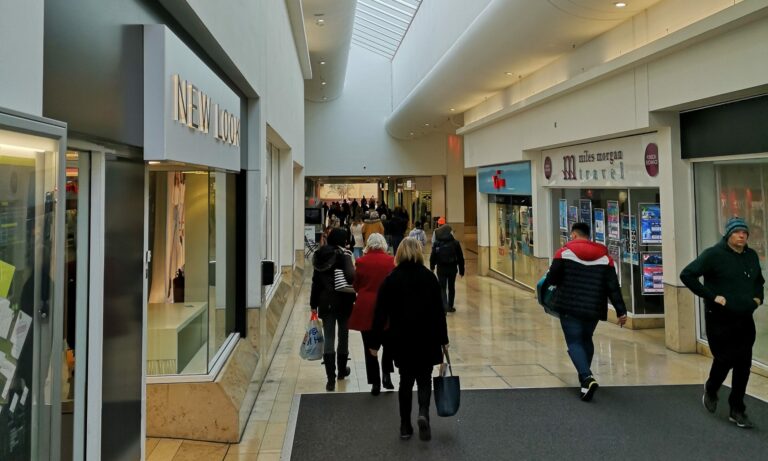January’s footfall results have followed the traditional post-Christmas dip with activity in retail destinations declining by -20.1% from December 2023.
Historically, this decline in footfall has averaged -22.6% in January from 2009 – which is when MRI Software first started publishing its footfall benchmarks – to 2020, therefore this year’s result is a slight improvement on this. However, it has deteriorated from January 2023 when the month-on-month decline was -18.8%. The drop in footfall was most prominent in shopping centres (-23.3%), closely followed by high streets (-20.4%) and then retail parks (-16.2%) aligning with the natural historical trend for all retail destinations.
Annually, footfall fell marginally by -0.8% which is an improvement from the historical trend of footfall declining by an average of -1.3% in January from 2009 to 2020. This modest drop suggests that despite ongoing economic challenges driven by the current inflation rate sitting at 4% as well as the overall cost of living burdens that many households are continuing to face, consumers appear to be navigating these pressures well. More so, households yet to witness a rise in mortgage payments are likely to consider these factors into their expenditure planning for the upcoming year.
The delayed return to offices and schools in the first week of January benefitted mainly retail parks where footfall rose by +2% week on week compared with declines in high streets (-0.8%) and shopping centres (-6.5%), likely influenced by the weather and travel disruptions across the UK.
Jenni Matthews, marketing and insights director at MRI Software said: “January was also bookended with severe weather and travel disruptions however this failed to dampen activity within UK’s high streets with only a marginal drop in footfall witnessed during the first week (-0.8%) and a rise of +4.4% in the final week of the month when Storms Isha and Jocelyn caused chaos across parts of the UK.
“With much of the weather disruption occurring throughout the weekday period, weekend footfall rebounded by +4.2% year on year across all retail destinations versus a decline of -2.6% during the week. This was driven by a rise in weekend activity during week one (+4.5%) and week four (+0.6%) which followed the storms. The middle of the month (weeks two and three) saw footfall decline by an average of -3.5% during the weekend versus just -2% throughout the week. This may well signal the tightening of purse strings for many if they had been paid the week before Christmas however a rise in footfall during week four coincides with payday for many across the UK.
“While the post-Christmas slump is evident in January’s footfall figures, the retail sector and businesses reliant on visitors travelling in by train are set to face challenges in the first half of February due to an unprecedented number of planned rail strikes. However, optimism prevails with half term approaching as this historically tends to deliver a much-needed surge in footfall following the festive period. Furthermore, with Easter break – the second biggest trading period for retail outside of Christmas – also in close proximity this year, it could serve as a benevolent boost for retail in the first quarter of 2024.”


